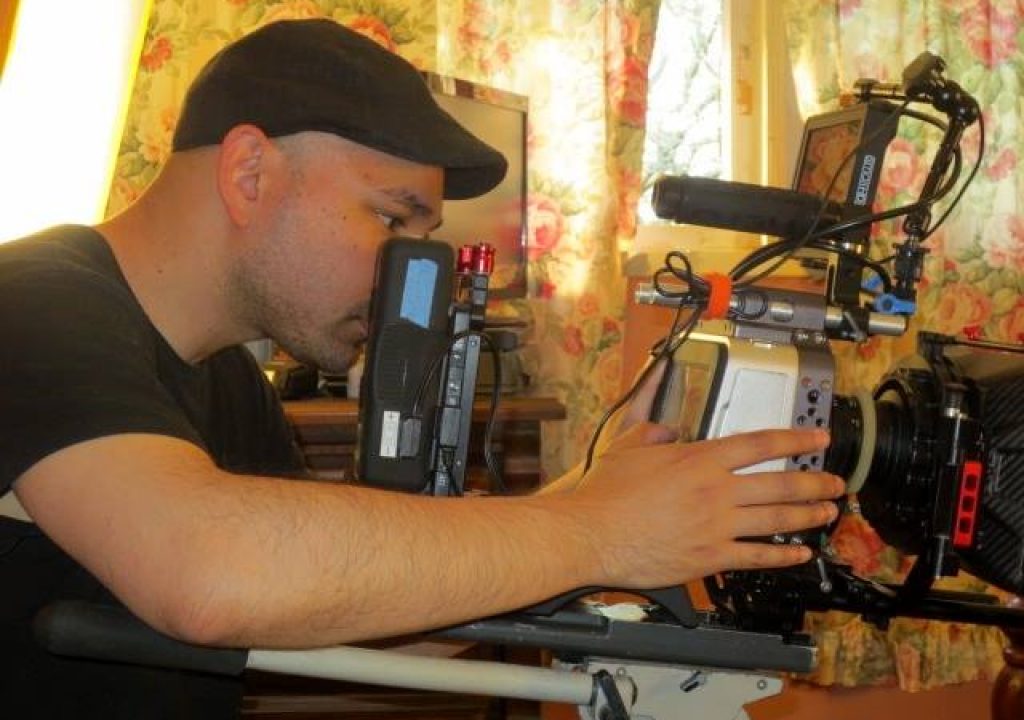Recently, Blackmagic Design released camera firmware 1.8 for all four of their cameras: Cinema Camera, Pocket Camera, Production Camera, and the Studio Camera. In an interview, New York based DP Paul del Vecchio talks about his work on the indie drama “Trent & Isabella.” and how the new firmware in the Cinema Camera helped him achieve the looks he lock down while on set.
Armed with a small crew, a limited budget and two Blackmagic Cinema Cameras New York based Director of Photography Paul del Vecchio had the opportunity to take the new firmware for a spin before BMD released it to the world. For Paul, it came down to the look, to the possibility of shooting 2.5K raw, but later deciding to shoot ProRes, and to the new firmware… specifically the new debayer.
While filming Paul used the new debayer feature in the firmware to help him nail the looks he wanted, which combined the subtle, shadowy film noir style of “The Maltese Falcon” with the shocking cinematic look of spaghetti westerns like “The Good, The Bad and The Ugly.” Paul says, “With the Blackmagic debayer, the ability to pull out even more high quality details from this camera is just amazing, and focus pulling was much more accurate and easy to do.”
According to Paul, the Blackmagic Cinema Camera gave him the leeway he needed to be creative with his shots, while providing a huge amount of data so he could manipulate the images. “We could put our attention on getting the shots right versus worrying about whether we could get it perfect for the different genres because I knew that the camera would get the details I needed.”
However, he did not want sharpness, or specificially an over-sharpness, in the images. So he decided to shoot with older Leica Summicron lenses. Lenses he said, that are great for picking up details while retaining a creaminess to the skin tones.
Another updated feature that was a huge help was the improved focus peaking, since anyone standing nearby could have been drafted as an assistant camera at any time. This was help that was greatly appreciated since Paul, at times, he pulled his own focus. Paul again, “To me, the Blackmagic Cinema Camera frees me creatively: the color science, speed booster. It became, basically, the perfect camera. No reason to worry about picture profiles.”
DETAILS ON THE SHOOT
- 10 to 12 day shooting schedule
- Leica Summicron lenses 35, 50, and 90
- 2 BMCC: MFT and EF
- MFT = A camera
- EF = B camera
- Monitor = SmallHD AC 7
- Audio recorded separately
- Shot 1080 ProRes
- ISO = Mostly 400. 800 when necessary
DETAILS ON BMD FIRMWARE 1.8
Blackmagic Production Camera 4K
- Updated user interface
- Losslessly compressed RAW DNG recording support
- Addresses an issue where pixel artifacts are seen in edges with strong highlights while shooting in 1080 mode
- Adds auto focus support for compatible EF lenses
Blackmagic Cinema Camera
- Updated user interface
- Adds auto focus support for compatible EF lenses
- Improved debayering when shooting to ProRes or DNxHD
- Improved focus peaking display
- Improved ISO handling when shooting at ISO 1600
- Improved general audio performance
- Iris setting is retained when switching between camera recording and clip playback
Blackmagic Pocket Cinema Camera
- Updated user interface
- Improved performance when recording using internal microphones
- Improved instances where a grid-like pattern may occur in some flare highlights
- General improvements in auto focus with active MFT lenses
- Adds supports for stabilization in MFT lenses without physical O.I.S switches
- Improved support for Sigma MFT lenses
- Improved support for Lumix 12-42mm PZ lens
- Improved support for Olympus 60mm f/2.8 MFT lens
- Iris setting is retained when switching between camera recording and clip playback
Blackmagic Studio Camera
- Improved phantom power compatibility
- Addresses an issue with interlace video being output as progressive video
LINKS
http://www.blackmagicdesign.com/support/readme/Blackmagic_Camera_Utility_1.8

